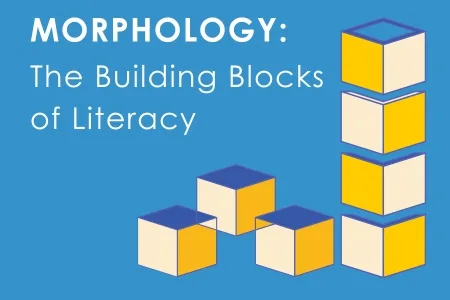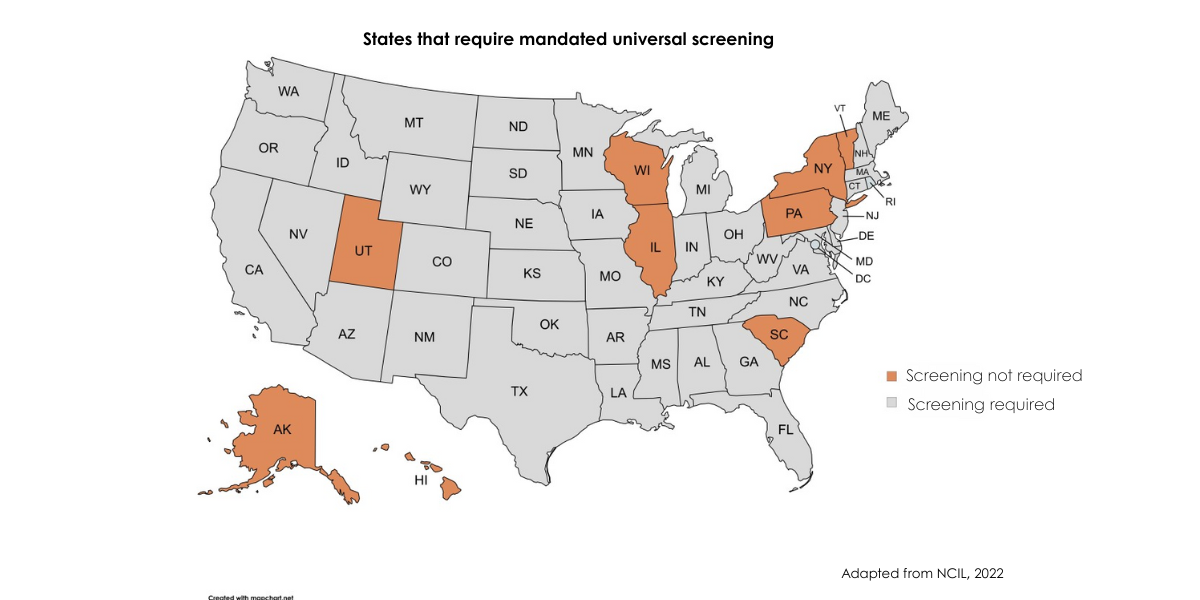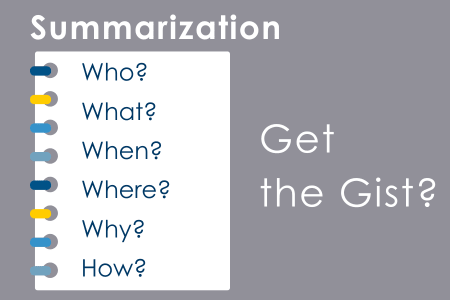Imagine empowering students with the tools to read and understand about 60% of words in their content courses just by grasping Greek and Latin roots. Incorporating morphological instruction into language arts and content literacy lessons gives students a powerful key for unlocking words, building vocabulary, and deepening comprehension (Eide, 2011; Moats, 2010). While targeted instruction is necessary to develop morphological skills, morphological learning can be woven seamlessly into our classrooms during authentic reading and rich language experiences.
Demystifying Morphology
Morphology is the study of word form and focuses on the smallest units of meaning in language—known as morphemes—and how they impact word meaning and function. These include bases, prefixes, suffixes, and roots. Morphemes can be free, like book or run, or bound, like the suffix -ing, which does not convey meaning on its own. Consider how the prefix re– and the suffix –ed change form into reformed, altering its meaning to indicate a past action involving improvement or change. This is the power of morphemes: One small adjustment can alter the meaning of a word, sentence, or passage.
Why Morphology Matters
Morphological knowledge boosts spelling, word recognition, vocabulary, and comprehension skills (Henry, 2010; O’Connor, 2014). Instruction begins when students are learning to read. However, more targeted instruction often starts in early elementary school, when students explore the most common prefixes and suffixes. For instance, the top nine prefixes appear in 75% of words with a prefix (Eide, 2011), and the suffixes -s, -ed, -ing, -er, -es, and –est are found in 58% of words with suffixes (Henry, 2010).
Instruction in Greek and Latin roots often begins in the later elementary grades and becomes more focused as students age. High school students will encounter many Latin and Greek roots within their content area reading. For instance, ceed, in exceed and succeed, is a common Latin root that appears in many complex texts.
For struggling readers, morphology can serve as a crucial bridge to literacy and comprehension. Morphological instruction helps demystify complex words by breaking them down into manageable parts and allows students to recognize spelling patterns and meanings more readily. For English learners, morphology taught in relation to cognates can be especially impactful (Kieffer & Lesaux, 2007).
Getting Started
Explicit instruction in morphemes involves directly teaching the spelling, pronunciation, and meaning of individual morphemes; providing examples with words and sentences; practicing the new morpheme with word-building activities that include previously learned morphemes; and ongoing practice and reinforcement. Once students master common prefixes and suffixes and move on to Greek and Latin roots, they should be taught to break multisyllable words down into their morphological components to infer word meaning.
Practice and Reinforcement
- Word Building and Deconstruction: Challenge students to create new words by combining different morphemes. This can be a pencil and paper activity, but word building also lends itself to collaborative work with word-part cards. Having students deconstruct words is another useful strategy.
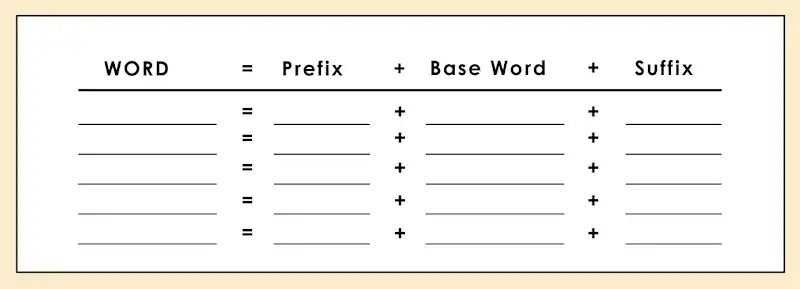
- Word Webs: Visualize connections between words by creating a web with a base or root in the center and words with the base/root and affixes in branches.
- Morpheme Matrices: Encourage exploration of word families and root/base/affix combinations with matrices that list prefixes on the left, a root or base in the center, and suffixes on the right.
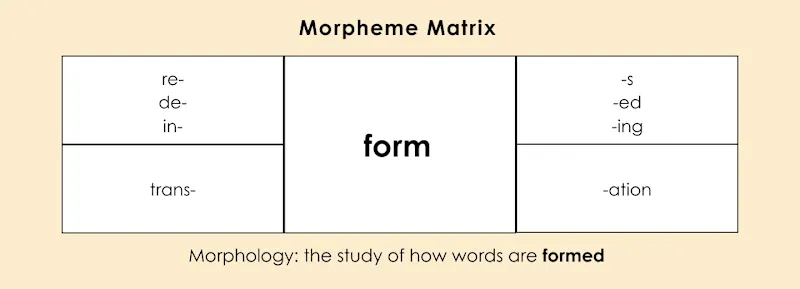
- Morphological Awareness Games: Use word games like “Morpho-Match,” where students pair roots with their corresponding prefixes and suffixes to form new words. This reinforces their understanding of word structure.
Mastering the fundamentals of morphology can significantly enhance reading, spelling, and comprehension skills. It also sets students up for long-term literacy success with increasingly complex texts in high school, college, and beyond. Morphemes may be small, but they are mighty!
References
Eide, D. (2011) Uncovering the logic of English: A common sense approach to
reading, spelling, and literacy, Logic of English, Inc.
Henry, M. (2010) Unlocking literacy: Effective decoding & spelling instruction,
Baltimore, MD: Paul H. Brooks.
Keiffer, M., & Lesaux, N. (2007). Breaking down words to build meaning:
Morphology, vocabulary, and reading comprehension in the urban
classroom, The Reading Teacher, 61(2), p. 134-144, doi: 10.1598/RT.61.2.3.
Moats, L. (2010) Speech to print: Language essentials for teachers, Baltimore,
MD: Paul H. Brooks.
O’Connor, R (2014). Teaching word recognition (2nd Edition): Effective strategies
for students with learning difficulties, The Guilford Press.
Rasinski, T., Padak, N., & Newton, J. (2017). Literacy in every classroom: The roots
of comprehension: Studying Latin and Greek word origins makes
vocabulary instruction resonate; ASCD 74(5), 41- 45.
Stone, L. (2016) Language for life: Where linguistics meets teaching, London,
England: Routledge, doi: 10.4324/9781315708188.







